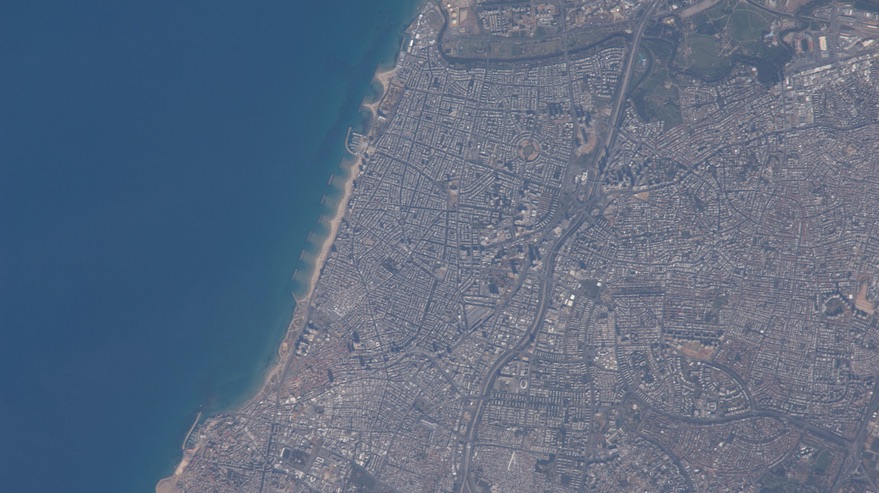Products You May Like
WASHINGTON — The federal government will soon allow U.S. commercial remote sensing companies to sell high-resolution satellite images of Israel, changing resolution limits that have been in place for more than two decades.
In a draft of a Federal Register notice obtained by SpaceNews, the National Oceanic and Atmospheric Administration (NOAA), which hosts the office that licenses U.S. commercial remote sensing satellite systems, says it will reduce the resolution limit on satellite imagery of Israel from 2 meters to 0.4 meters. It is also available as an “unpublished notice” available for public inspection on the Federal Register website, with a note that it is scheduled for formal publication July 21.
A provision of the 1997 National Defense Authorization Act known as the Kyl-Bingaman Amendment limits commercial satellite imaging systems licensed by the federal government to providing imagery of Israel that is “no more detailed or precise than satellite imagery of Israel that is available from commercial sources.” Since 1998, NOAA has interpreted that to mean images with a resolution no sharper than 2 meters, a limit reviewed and upheld by NOAA in 2018.
The growth of commercial satellite imagery companies outside of the United States, and thus not bound by federal law and regulations, has changed that assessment. In the Federal Register notice, NOAA’s Commercial Remote Sensing Regulatory Affairs (CRSRA) office, which licenses such systems, said a recent study led it to conclude that images with resolutions finer than 2 meters are available from commercial providers.
“A recent review found that there are an increasing number of non-U.S. space-based remote sensing systems that produce sub-2 m images,” the draft Federal Register notice states. “Many of these systems make such imagery over Israel available on commercial terms, and images can be purchased directly from non-U.S. operators, non-U.S. resellers, and resellers within the U.S.”
At a June 25 meeting of the Advisory Committee on Commercial Remote Sensing, Sarah Brothers, a CRSRA analyst, said that as part of the latest review it found 12 companies in 8 foreign countries operating satellites capable of producing images with resolutions sharper than 2 meters, as well as 13 nations that operate dual-use satellites with similar capabilities. More than 20 additional high-resolution satellite systems in 12 countries are in various phases of development.
To confirm that high-resolution satellite images of Israel are, in fact, commercially available, CRSRA contacted 16 satellite operators and resellers, 5 of whom responded that they did sell such imagery. CRSRA obtained 12 sample images from those operators, including both panchromatic and multispectral images, and through independent analyses found that their resolutions ranged from 4 meters for multispectral images to 0.4 meters for “pansharpened” images. The actual resolution of the images was within 10 centimeters of the advertised resolution.
“CRSRA has concluded that sub-two-meter satellite images of Israel are available, readily and consistently, from a number of non-U.S. operators and foreign and domestic resellers,” Brothers said at the meeting. At the time, she said the office was working on a formal notice about changing the Kyl-Bingaman threshold though a Federal Register notice.
A major change from the 2018 review, she said, is increased availability of images from some foreign operators, often through resellers. “There are now some markets now opening up that, maybe a few years ago, it was really hard to find those data here,” she said. “The increasingly global nature of the reseller industry has really helped us understand how we can obtain them readily and consistently.”
While the focus was on availability of electrooptical imagery, Brothers said that the restriction is “instrument agnostic” and thus applies to any kind of satellite imagery. That includes both optical images as well as synthetic aperture radar data.
At the meeting, some committee members asked about the process by which CRSRA found that the high-resolution satellite images of Israel were available. That survey ranged from contacting customer support offices of operators and resellers to the analysis of the sample images, but did not include actual purchases of the images. “We didn’t need to purchase it this time,” said Tahara Dawkins, director of CRSRA, “because we were given free samples of the data.”
While CRSRA officials said at last month’s committee meeting that the analysis was complete, they were not at the time ready to make a formal declaration of the revised resolution limit. Dawkins said there was “a couple administrative things” needed to finalize the decision, as well as notifications of the State Department and relevant congressional committees.
In the Federal Register notice, NOAA said it found little evidence of foreign systems providing imagery at resolutions sharper than 0.4 meters, but left open the door to further revisions of the Kyl-Bingaman resolution limit. “The Department of Commerce will routinely review this finding as additional information is made available and invites the public to voluntarily provide evidence of availability of commercial imagery over Israel at a finer resolution than 0.4 m.”
